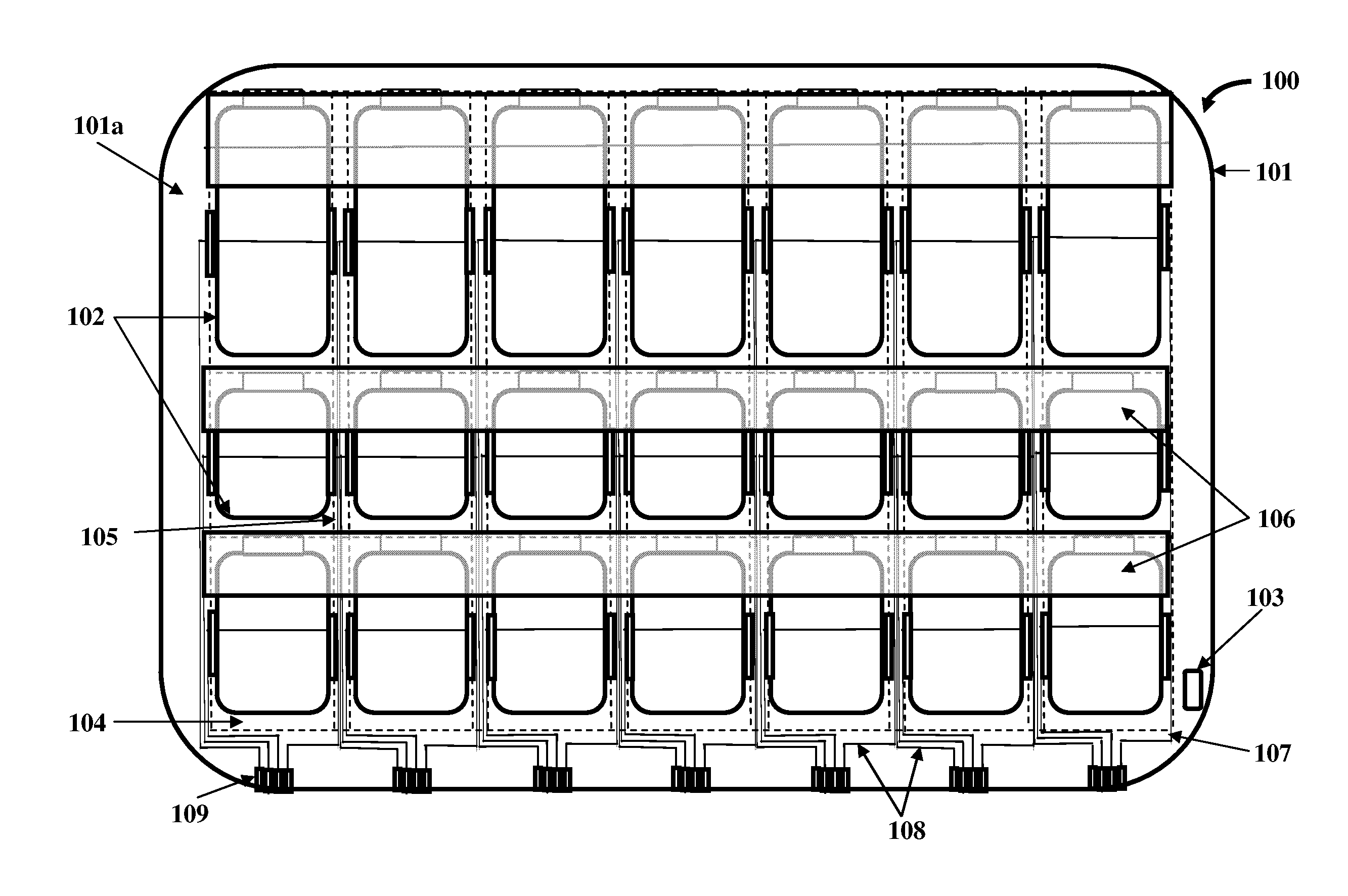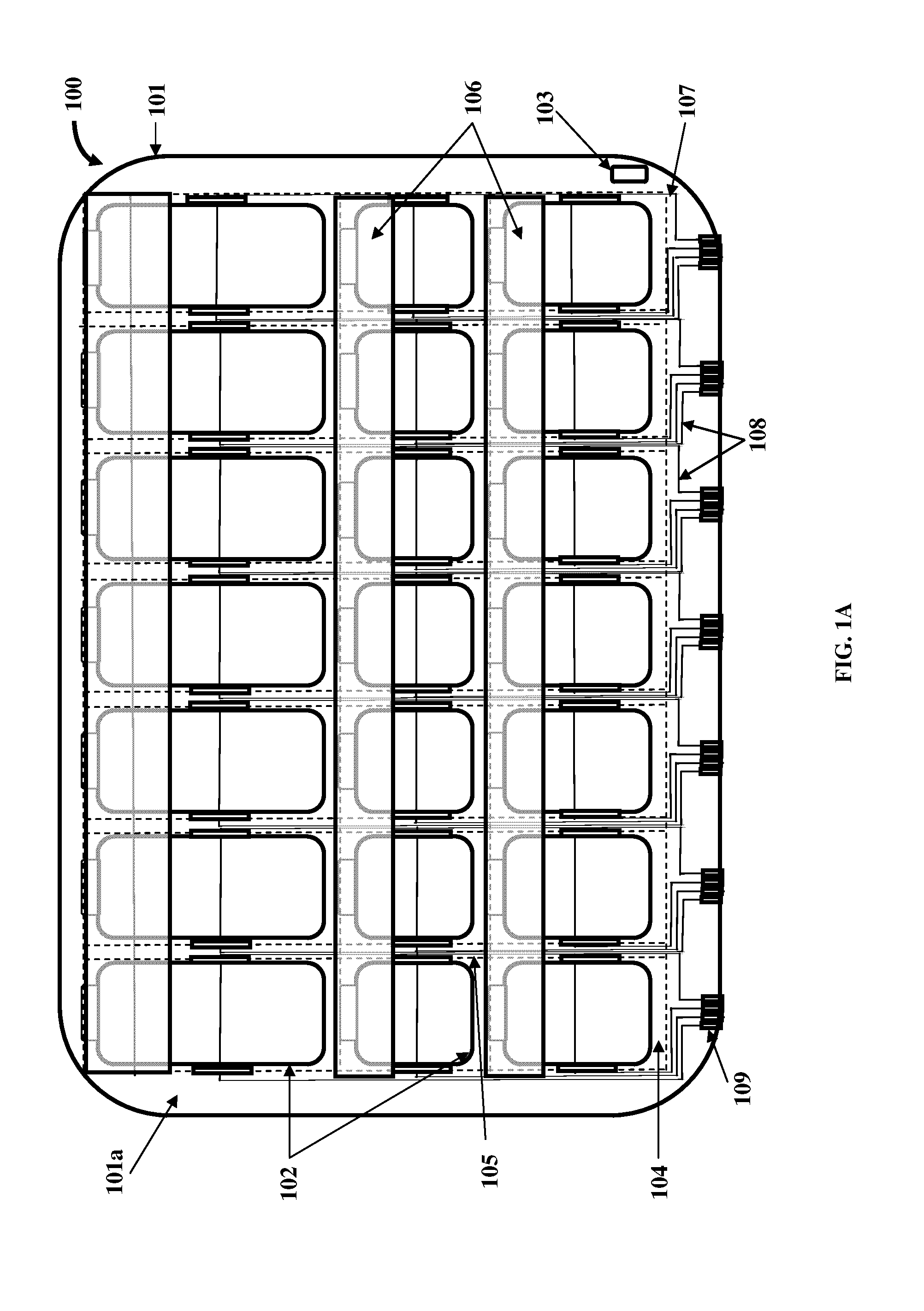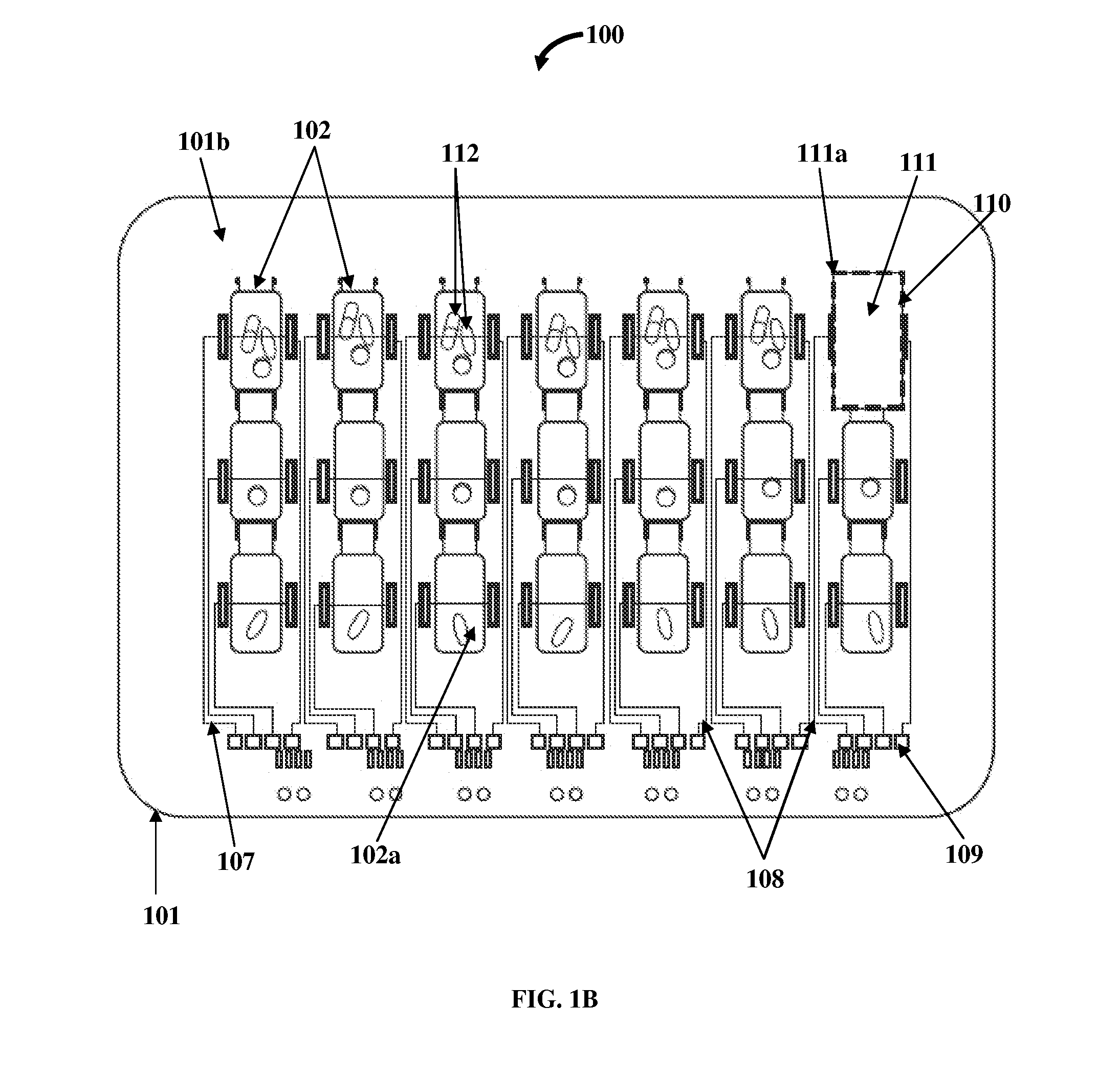Medication Organizer Tray Apparatus
a technology of medication organizer and tray, which is applied in the direction of packaging foodstuffs, pharmaceutical containers, packaged goods types, etc., can solve the problems of poor medication adherence, 125,000 deaths, and about 33% of deaths
- Summary
- Abstract
- Description
- Claims
- Application Information
AI Technical Summary
Benefits of technology
Problems solved by technology
Method used
Image
Examples
Embodiment Construction
[0043]FIGS. 1A-1C exemplarily illustrate different views of a medication organizer tray apparatus 100 for organizing medications 112 exemplarily illustrated in FIG. 1B. The medication organizer tray apparatus 100 disclosed herein is a medication tray, for example, a thermoform based pill tray or a thermoform plastic tray with sensitive circuitry that electronically alerts healthcare providers on whether medication bins 102 comprising medications 112 are opened correctly and at the right time. As used herein, “healthcare provider” refers to a person or an entity, for example, a medical practitioner, a medical specialist, a health specialist, a physician, a doctor, a dentist, a surgeon, a nurse, a therapist, a nutritionist, a pharmacist, a clinical trial professional, a clinical study professional, a healthcare institution such as a hospital, a clinic, etc., a health insurance company, a health maintenance organization, a caregiver, etc., that provides healthcare services, for example...
PUM
 Login to View More
Login to View More Abstract
Description
Claims
Application Information
 Login to View More
Login to View More - R&D
- Intellectual Property
- Life Sciences
- Materials
- Tech Scout
- Unparalleled Data Quality
- Higher Quality Content
- 60% Fewer Hallucinations
Browse by: Latest US Patents, China's latest patents, Technical Efficacy Thesaurus, Application Domain, Technology Topic, Popular Technical Reports.
© 2025 PatSnap. All rights reserved.Legal|Privacy policy|Modern Slavery Act Transparency Statement|Sitemap|About US| Contact US: help@patsnap.com



